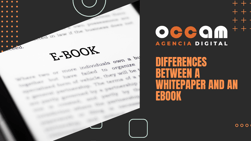Index Content
In this blog article, we will try to explain: what is a database; what are the benefits of doing a database cleanup; and how to do a database cleanup correctly.
A database is a set of structured and stored data. Currently, its format is digital although they have always existed - a library or a museum could be considered databases. The data belonging to this set, are usually related to the same context. What is intended to achieve with the grouping of all this information in databases, is to maximize the usefulness and speed.
Data are key to an Inbound Marketing strategy. They are one of the most important and valuable elements for companies. Data allow you to analyse, identify and segment the profiles of your buyer persona, so that they match more closely with the characteristics of your products or services. However, over time, data accumulate. Many of them end up being useless, so you should try to clean the database regularly.
what is a clean-up?
A cleanup is the removal of data that is no longer useful for your reporting and analysis. It is also the removal of erroneous data from a data table. A cleanup makes it possible to identify errors, inaccuracies and incomplete data. By cleaning a database, you free up a large amount of space that can be reused by new data. Updating data is crucial to your marketing strategy: update or die.
A cleanup prevents the failure of your advertising campaigns, caused by old email addresses, duplicate contacts or misspelled names. It allows you to sort out all the necessary information and eliminate the expendable.
how do I do the database cleaning correctly?
- Remove duplicate data
One of the reasons for the appearance of duplicate data can be due to unconscious data entry. If there are many channels that capture information and data from contacts, it is possible that they collapse and slip in twice.
When cleaning your database, you can use tools that help you to eliminate duplicates to simplify the amount of information in your database.
A free and easy-to-use tool is Google Contacts, which merges duplicate information, and others that work in a similar way, such as Dedupley, or bulk mail data collection tools such as Experian Data Quality. - Update your data
Annually, a lot of data becomes obsolete - as a consequence of the number of changes that are constantly anticipated. Internal company movements cause many of your contacts to change, whether it be email, phone number or other reasons.
Keeping track of the status of each of these contacts is an irredeemable task for the marketing team. Updating data is food for thought for the synergy of the marketing strategy. But since it is a time-consuming task to constantly update data, an alternative is to use tools that make this process easier. Scanning emails and information and measuring their availability - Verify data
An integrated system ensures that all new and updated data is correctly entered into the central database. Confirm that the team always uses the same format to complete certain information fields in your CRM. Ensure that some of these are mandatory when creating a contact record to avoid data loss and ensure that everyone follows the same information.
Another option is to set up contact synchronisation between your CRM and other tools. This ensures that both your management platform and other applications have the same information, reducing the possibility of errors when entering new data.
what are the benefits of data cleansing?
- Having eliminated all that useless data, you can retrieve all the most efficient lead information, which increases your customer acquisition efforts.
- The order and grouping of contact data allows you to make more concrete and helpful decisions. After a database cleansing, you are left with quality data that is essential for your reporting and analysis. You help the tools that scan and segment the information. Thanks to the accuracy you allow the company to speed up the decision making process, in a simple way.
- Among other benefits, it increases the performance of the sales team by allowing them to assess the context of a product or service in the marketplace. By being able to accurately address actionable data, the opportunity arises to launch a new product or service that addresses the needs of your consumers.
- Increases workforce productivity. With a clean database, workers optimise their utility in working hours. Clean records maximise the efficiency of analytical tasks on this data.
- Increased revenue and ROI, after data cleaning, response rates improve, as does revenue. We get to work with consistent and useful data. Reduced bounce rates, as emails are now sent to customers who we want to receive information accurately and in a timely manner. Potential customers who are loyal to our products and services.
Now we understand why database cleansing is so important. If there is one characteristic that data must have, it is: accuracy; completeness; timeliness; relevance; consistency; reliability; accessibility; and appropriate presentation. Data quality is crucial. Maintaining the accuracy and completeness of all types of data in an organisation means that the organisation can fulfil its purpose in a given context, which means ensuring that each piece of data has all of these characteristics.
In an organisation, data quality is critical to ensure consistent reporting, user confidence, and efficient operational and transactional processes. Business marketing strategy must rely on high-quality data, and to ensure that data is at its best, it must ensure that every interaction with data benefits it, from the way it is entered to how it is stored and managed. }
}




